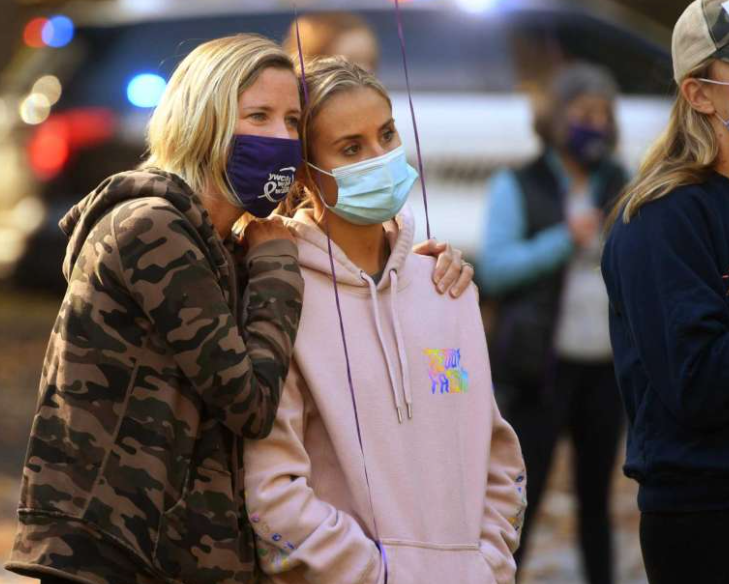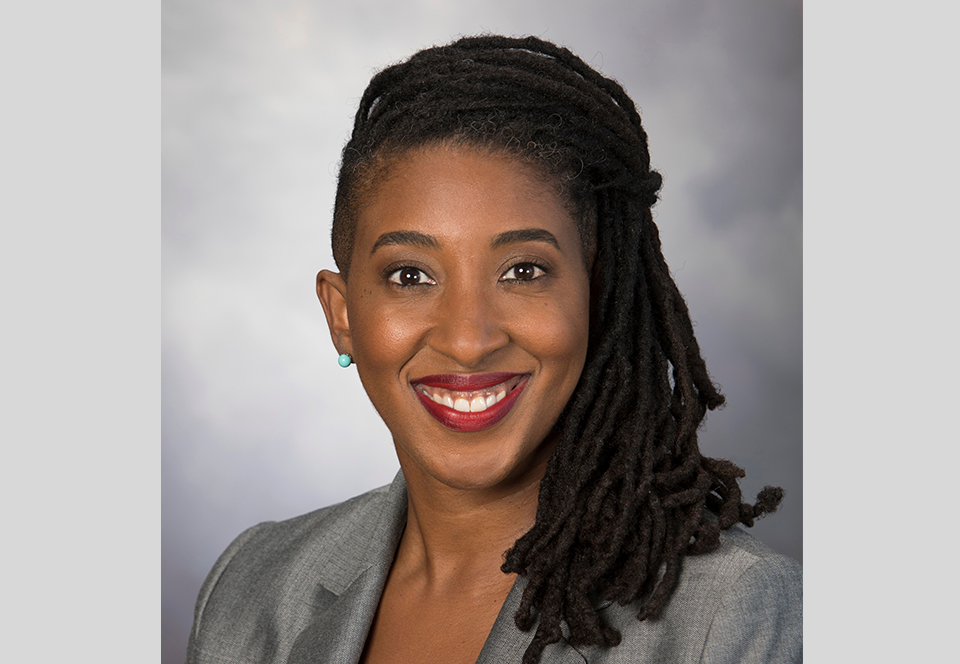
Her Husband Abused Her. But Getting a Divorce Was an Ordeal.
September 16, 2020
Bruce Park walk puts spotlight on increasing problem of domestic violence in Greenwich
October 5, 2020September 19 2020. CT by The Numbers. June 10, 1983, Tracey Thurman received one last beating from her estranged husband, Charles “Buck” Thurman, as the Torrington police officer she’d summoned waited in his car across the street. Buck slashed Tracey’s cheek with a knife, stabbed her in the neck, then threw her down and stabbed her twelve more times. Finally the officer entered the yard and got Buck to give him the knife. But he made no arrest. He stood by as Buck kicked Tracey in the head and broke her neck. As paramedics loaded Tracey into the ambulance, Buck made yet another run at her—and only then did the police arrest him.
Tracey survived, and won a $2.3 million judgment against the Torrington Police Department. “From that moment on, Connecticut took domestic violence very seriously,” says Suzanne Adam, executive director of the Stamford-based Domestic Violence Crisis Center. Thurman’s case gave rise to the Family Violence Prevention and Response Act of 1986, also known as the Thurman Law, which requires police to make an arrest when confronted with domestic violence. Before that, police would ask a victim if she wanted to press charges—and she might well be too afraid to do so. Also, an arrested abuser must now be arraigned the next day, so that a judge can quickly put into place an order of protection.
State law continues to evolve. After 1986, domestic violence arrests rose dramatically, but police were obligated to arrest both parties when each pointed a finger at the other. This had the effect of re-punishing the abused person and dissuading her from ever calling the police again—and Connecticut had the highest “dual arrest” rate in the country. (Dual arrests also took mothers away from their children, temporarily but traumatically.) In 2018 the state passed its dominant aggressor law, requiring police to “figure out who the bad guy is, and only arrest the bad guy,” as Sgt. Brent Reeves of Greenwich Police Department’s Special Victims Section puts it. The law, applauded by police, advocates and victims alike, went into effect on January 1, 2019.
“ In 2018 the state passed its dominant aggressor law, requiring police to ‘figure out who the bad guy is, and only arrest the bad guy.’ The law, applauded by police, advocates and victims alike, went into effect on January 1, 2019.”
Divorce and domestic violence are often linked, but Connecticut’s family court system is ill-equipped to deal with the two issues at once, critics charge. One easy fix: make abusers suffer serious consequences for breaking restraining and protective orders (for now they don’t, advocates say, though some criminal defense lawyers would disagree). A harder fix: identifying abuse in the context of divorce and custody battles. Family court judges (nationwide, not just here) usually reject claims of domestic violence, and worse, “The victim actually gets punished for bringing up the issue of abuse,” says Meredith Gold, director of abuse services at YWCA Greenwich.
For example: Where judges usually disbelieve, or at least shrug off, abuse claims, they usually believe the abuser’s typical counter-claim—that the victim is fabricating the charge in an attempt to alienate him from his children. So not only is the victim granted no protections, but she risks her abuser gaining some or even majority custody of the children as the judge attempts to “correct” the alienation. According to the Center for Judicial Excellence, 738 U.S. children have been killed by a divorcing or separating parent since 2008.
Some states assemble expert-produced bench books to help judges recognize domestic violence in all its shades, and the Connecticut Coalition Against Domestic Violence has proposed legislation to create one. If judges could confidently determine the presence of abuse, they could make better decisions, says Karen Jarmoc, CCADV’s chief executive. The Connecticut Judicial Branch says it has a guidebook already, but Jarmoc believes it’s inadequate: “It’s just something they’ve developed internally, without the expertise of other disciplines” such as psychologists, family lawyers and researchers, she says.
Meanwhile, state Sen. Alex Kasser, a Greenwich Democrat, has proposed the Child Safety First bill, also known as Jennifer’s Law, in honor of Jennifer Farber Dulos, which would bring big changes to family court. It would, for instance, make domestic abuse a paramount consideration. It would also put cases with more than 100 filings—and thus suggestive of “legal abuse”—on a special track. And crucially, it would broaden the definition of domestic violence in family court beyond physical violence, threatening and stalking to include emotional abuse, intimidation, isolation and financial abuse (this might range from denying the victim access to bank accounts to ruining her credit).
Mary Lee A. Kiernan, president and chief executive of YWCA Greenwich, would like to see a similarly broadened definition in criminal law: she notes that Ireland voted to do so in 2018. Its Domestic Violence Act 2018 criminalizes psychological and emotional abuse, or “coercive control,” recognizing “that the effect of non-violent control in an intimate relationship can be as harmful to victims as physical abuse,” said Charlie Flanagan, Ireland’s Minister of Justice and Equality.
“Two national events greatly altered the complexion of domestic violence in the United States.”
Two national events greatly altered the complexion of domestic violence in the United States. The first was O.J. Simpson’s arrest for the murder of his ex-wife Nicole Brown Simpson and her friend Ron Goldman in 1994. As Rachel Louise Snyder wrote in her groundbreaking book No Visible Bruises, published last year, “Her murder hurled into the forefront a conversation that advocates had been having for years—that it could happen anywhere, to anyone.”
The second event was the passage of the Violence Against Women Act, or VAWA, introduced by Sen. Joe Biden in 1990 but only passed in the wake of Nicole’s murder in 1994. VAWA provides funding to cities and towns for domestic violence services such as advocates, shelters, transitional housing, legal training, and abuser intervention programs. (Regarding the last: Connecticut courts often mandate anger management classes for abusers, though domestic violence is far less about anger than about the need to exert power and control. “They might as well not send them anywhere,” Rachel Louise Snyder tells us. “It’s just a complete misread of what the psychological underpinnings are. You can quote me on that twice.”)
VAWA requires Congressional reauthorization every five years. Alas, we’re still waiting for the 2018 reauthorization—largely because of certain senators’ objection to a provision barring those convicted of “dating” violence, including stalking, from possessing firearms. Current and former spouses convicted of domestic violence crimes already are prohibited from keeping firearms; this provision would close the so-called boyfriend loophole. As the date for reauthorization came and went, actress and activist Alyssa Milano tweeted, “What kind of country allows its Violence Against Women Act to expire?”
Officer Michael O’Sullivan, the domestic violence point person at the New Canaan Police Department, offers sunnier news. Intimate partner violence cases in his town dropped from a high of 96 in 2005 to 22 in 2018, the latest year for which there are stats. Why the remarkable decline? “A continuous education campaign for umpteen years,” he says, noting the work of such groups as the Domestic Violence Crisis Center, which covers New Canaan.
Rachel Louise Snyder sums up our current domestic violence picture like this: “People ask me all the time, ‘Are things getting better or worse?’ And my answer is ‘Yes.’”


